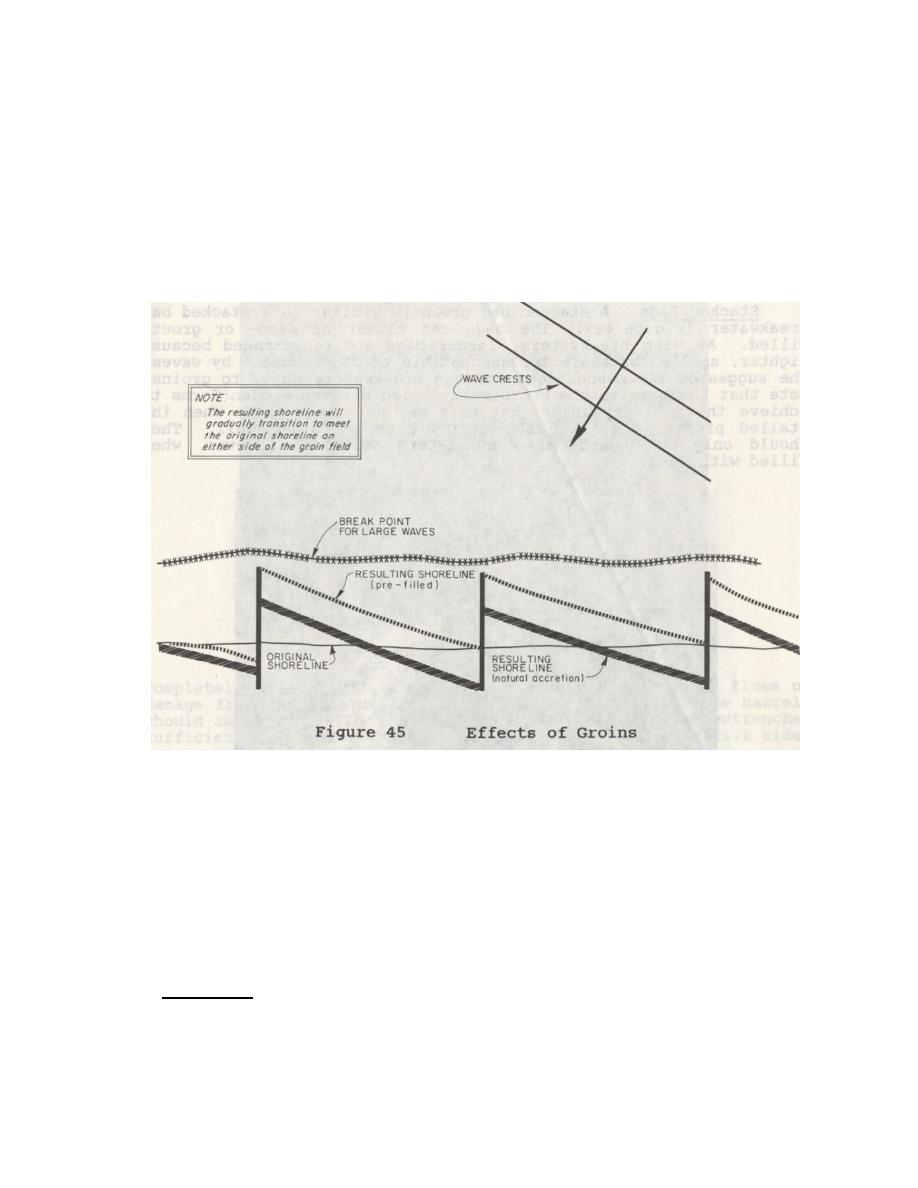
amounts of sand and cause downdrift damages. High groins effectively block the supply of sand to
downdrift beaches provided sand doesn't pass through them.
A groin's length must be sufficient to create the desired beach profile while allowing adequate
passage of sand around its outer end. If a groin extends seaward past where waves break (breaker zone),
sediment moving around the structure may be forced too far offshore to be returned to the downdrift
beach. Therefore, the groin should not extend past the breaker zone, but it can be shorter provided that it
traps a sufficient quantity of sand. All groins should be extended sufficiently landward to prevent their
detachment from shore (flanking) if severe erosion occurs.
The correct spacing of groins depends on their length and the desired final shoreline shape. If
groins are too far apart, excessive erosion can occur between them. If spaced too closely, they may not
function properly, which is particularly critical for high, long groins where sand can only pass around the
ends in a curved path back to the beach. If the groins are too close together, the sand is unable to reach
the shore again before being forced seaward by the next downdrift groin. A common rule is to provide a
spacing equal to two or three times the groin length, measured from the water's edge.
Structurally, a groin must resist wave action, currents, the impact of floating debris, and earth
pressures created by the difference in sand levels on the two sides. As with other structures, a groin must
also resist the scour created by waves breaking on the structure and by currents adjacent to it.
Stacked Bags. A stacked bag groin is similar to a stacked bag breakwater (Figure 46). The bags
can either be sand or grout filled. As with breakwaters, larger bags are recommended because lighter,
smaller bags are too susceptible to displacement by waves. The suggested recommendations for bag
breakwaters apply to groins. Note that the bags in the photo were filled between wooden forms to
53



 Previous Page
Previous Page
